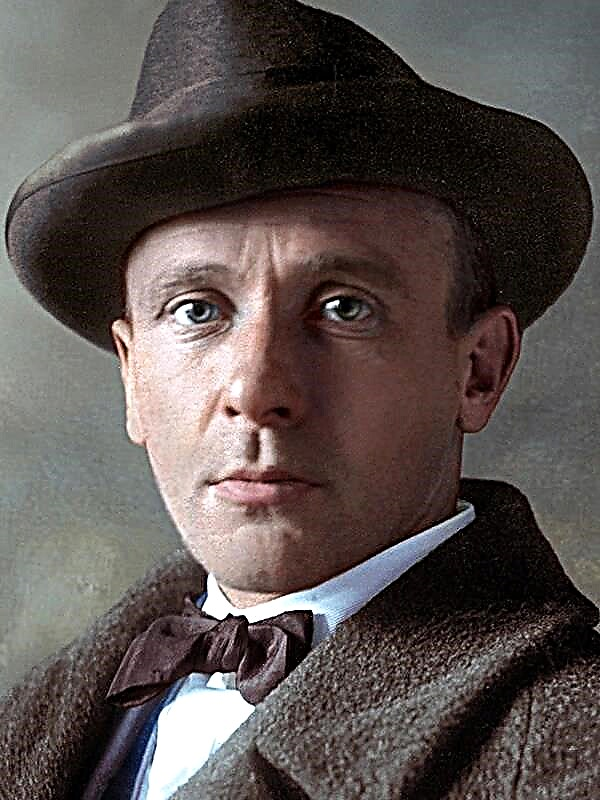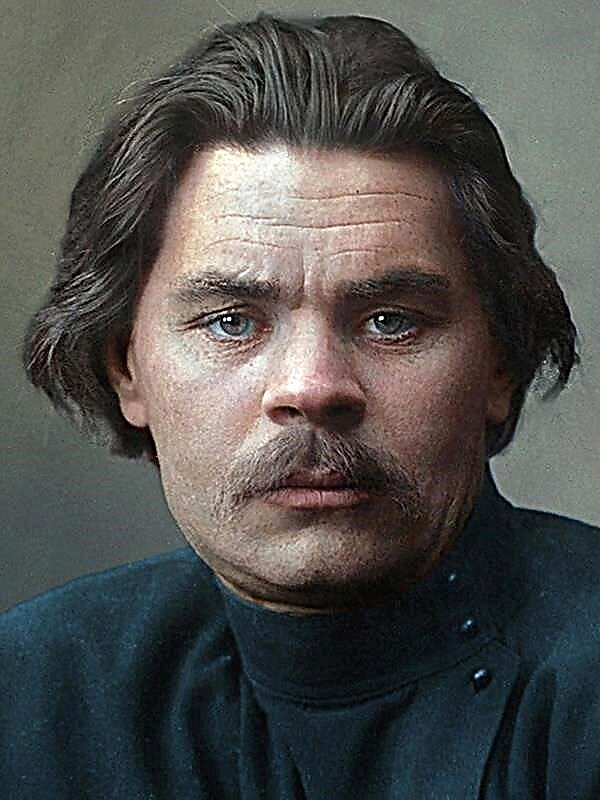Entrepreneurial myth
A million small businesses open in America each year, but 40% of them go bankrupt in the first year, and 80% in the first five years. Most of these 800,000 companies are victims of the Entrepreneurial Myth.
The P-myth is a fundamental fallacy of American business in that courage, knowledge of technology and a good idea are sufficient for success.
People often start a business just because they succeed in a particular field. Once they have an “entrepreneurial attack”: they realize that they no longer want to work “for an uncle”.
Example. Barista learned to roast grains, brew coffee and latte art, she had a lot of ideas about cafe management. And she decides to open her coffee shop.
Opening a company with only technical knowledge and ideas is a mistake. Do not think that knowing how to do any work, you know how to manage a business. These are completely different things.
Example. Barista opened her own cafe and soon realized that she lacked skills: you need to know how to hire employees, systematize tasks and develop a business.
Young business does not survive puberty
Business development is similar to personal development: companies are experiencing infancy, youth and maturity. Most businesses go bankrupt already in their teens.
In infancy, the owner and his business are one. A business owner can do all the work himself.
Example. Barista is now roasting and brewing her own coffee - it's so cool.
But success at this stage means attracting more customers and selling large volumes of products. It becomes difficult to cope with work alone.
Example. Customers begin to notice clutter and dirt, because the owner does not have time to clean up. Barista is surrounded by mountains of accumulated tasks. When she hires employees, the business enters adolescence.
The teenage period begins well: the owner no longer has to do everything himself. But most abuse this freedom by shifting their responsibilities to others. They transfer their tasks to employees and consider this sufficient. But control is necessary for everything to be done correctly.
Example. At the cafe, customers start complaining about the bad latte of the new barista.
In the teenage stage, the owner must leave the comfort zone in which he controlled everything himself. A business will go bankrupt if it cannot grow.
Example. What should a former barista do, and now a business owner? You can fire employees, return to your comfort zone and pile on yourself mountains of work. You can let the business grow until it gets out of hand, then hire assistants and put up with the decline in coffee quality. Well, you can plan business growth from the first day of opening.
Plan your business from the start
We need to plan the development of the company long before its opening. Enterprises moving to maturity are based on a broader approach and have a planned structure.
Successful entrepreneurs think ahead, trying to create a company that operates independently of their presence. That is, when the stage of youth ends, the business will be able to develop independently.
To open a business that can reach maturity, an entrepreneurial vision is needed. From the very beginning, plan what your business will be in the future and how your goals will be achieved.
Example. Barista knows the technique of making coffee: she roasts the Guatemalan beans and serves latte.But how to distinguish a coffee house from competitors? How to attract customers? What audience is its business designed for? To answer these questions, an entrepreneurial vision is needed.
To bring an entrepreneurial vision to life, you need an entrepreneurial model. She describes the way you will meet the needs of customers. The entrepreneurial model should include the market opportunities of the business, a clear idea of the ideal customer and how to present your product.
Example. To save the business, the barista will have to close the cafe for a few days and reflect on his entrepreneurial vision and model. Perhaps her target audience will be environmentally literate students, and she needs to be the first cafe where they use milk only from local farms, and organize reading rooms.
Inside each of us, many hypostases are hidden
We are composed of a number of conflicting personalities. Each of us is a bit entrepreneur, manager, and technical specialist.
An entrepreneur is an innovator who sees around a whole world of opportunities, a dreamer with an incredible amount of energy. He uses all opportunities and inseparably looks to the future. Sometimes this energy and the pursuit of opportunities create panic and chaos. An entrepreneur pulls people along and is disappointed when progress slows down. Without an entrepreneur, innovation is impossible.
The manager is pragmatic and longs for order. He sees problems that can be fixed. If an entrepreneur creates innovations, then the manager organizes and arranges everything on the shelves. Without a manager, a business cannot function.
A technician is a doer and craftsman. A technician likes to control the progress of work and do his job well. He is annoyed by the insecurity of the entrepreneur and the constant change of ideas, tires of the manager's intervention in the course of work. But he is happy when an entrepreneur and manager create many tasks for him. Without a technician, nothing would work in business.
Although the three personalities within us contradict each other, learn to use the strengths of each of them. The owner of a small business should be 10% entrepreneur, 20% manager and 70% technician.
Small Business Revolution
We are in the middle of a process that will change business forever. It is called a turnkey revolution. Many enterprises are created so that the owner can give the "key" to the business to anyone who can successfully manage it. This creates a model that works great, stably provides products without the presence of the owner. In other words, this is a franchise.
To create a turnkey business, create a business franchise — the model you sell to the franchisee — to the person managing your franchise. It contains business processes, organizations and systems.
The success rate of franchises is surprisingly high: 80% of small businesses go bankrupt in the first five years, but 75% of franchises flourish.
The turnkey revolution is successful because it aims to build the business they want to buy.
Example. Anyone who decides to purchase your business will first ask if it works. If business systems are built on the most simple and effective way, anyone can manage the company. So she becomes very attractive for shopping.
In a turnkey revolution, you are not just selling products. You work to sell your business to a franchisee.
Ray Krok began the turnkey revolution in 1952 when he decided to create a stall with the same burgers for each client. Krok defined the processes that anyone could follow because he saw a potential buyer as a potential franchisee. Kroc has sold McDonald’s business systems as a franchise more than a thousand times.
The national chain begins with the first store
How to create a franchise? First, build a prototype of franchising, that is, the original model of your business, which will be subsequently reproduced. The prototype of franchising should be valuable and so simple that anyone can manage it.
The value of the prototype can be: low prices, exceptional customer service, a gift sent by mail to your customers, and so on.
Example. The value of the coffee shop is its impeccable latte, which is served with free biscuits.
Value should depend on the system, not the specialist. Make the system so simple and effective that the business does not depend on you or the specialists.
Example. If the barista creates a training program that guarantees that every novice in the cafe will make the perfect latte, she will no longer have to do this herself.
The prototype of franchising should have a management manual, where each process of managing your company is registered.
Example. The barista should draw up a guide to both preparing latte and training new employees.
A franchise prototype must continuously provide the same product. If people do not know what product or service they will receive, they are unlikely to become regular customers.
Example. If a coffee shop customer is once served a tasteless latte and rancid the next day, he will never return. And the franchisee will not want to run a business with unpredictable results.
Open a business to achieve your own goal in life
As soon as a prototype of franchising is created, the fulfillment of your desire becomes a priority. The most important step in building a business is to determine your main goal or understand what you want to achieve in life.
To find out the main goal, answer the questions:
- What excites me the most?
- How do I want to live?
- How much money do i need?
- How much do I want to travel?
Then determine the strategic goal - a list of tasks that the business should fulfill.
The strategic goal is a tool for assessing progress, implementing plans and franchising a business. This is a list of norms that anyone can understand. It also contains financial forecasts, planned gross income and profit.
The strategic goal determines why your business has market prospects for achieving financial goals and meeting the main goal. It also determines what kind of business you do and describes your ideal client.
Example. The main goal of the barista is to receive $ 500,000 a year and spend one month traveling every year. The strategic goal should explain how its three cafes will bring $ 167,000 a year each, and contain a plan on how to curtail the activities of the cafe for a whole month annually.
Organizational structures are critical to business development
Most people hate organizing. But the business will not be successful if employees do not know their responsibilities.
Develop an organizational strategy, distributing responsibility among staff. Even if the company is too small, you need to plan an organizational strategy in order to know the prospects for business development.
First, determine how many employees you need and what kind of work everyone will do. Then, for each position, draw up a work schedule that describes who the employee reports to and how his work will be evaluated.
Example. A barista knows that each of her cafes will need three barists, a baker, a room manager, a marketing manager, an accountant and a director. At first, the barista independently performs all duties: makes coffee, bakes cookies, engages in advertising and keeps records. But the business is growing, and you need to know exactly how many people to hire and for what position. Having experience in each position, the barista knows them “from within” and can draw up special manuals that will be passed on to future employees.
Another advantage of a clear organization is the individual responsibility system. Each employee is responsible for the job, which should be clearly stated in each manual and regulation.
Each employee must sign the regulation, thereby agreeing to responsibility for the fulfillment of the tasks assigned to him.
With a full set of employees, your business will be able to achieve its strategic and main goal.
When managing personnel, rely not on people, but on the system
The secret to a successful management strategy is not in talented leaders, but in the management system.
The management system is a marketing tool that reflects how you treat employees and motivate them. It has the greatest impact on the result that the client sees.
Example. A barista can tell the baker that he should be in the kitchen and bake a certain amount of cookies every day. Or you can make the kitchen accessible to the eyes of visitors and even let the baker choose the ingredients himself. Then the baker will be more passionate about work, and customers will receive more delicious cookies.
The most important part of the management system is the personnel strategy. Thanks to her, the staff will understand the idea underlying the work and help the business achieve its goals. It is also important to regularly test employees for compliance with job standards.
Example. Barista puts employee creativity a priority. By hiring a baker, she tells him that he needs to be creative and make up a new cake menu weekly. Bottom line: the baker develops his creative potential, and cafe visitors receive a diverse selection of cakes.
Think only of the customer
Focus on the client and think only about his needs. Examine the demographic and psychographic data of clients.
Example. Barista does not have enough money for a large-scale study, and she asks clients to fill out a short questionnaire with questions of demographic (age and address) and psychographic nature (leisure). With such information, barista products will meet the characteristics of visitors, inciting them to purchase.
Having known your customers as best as possible, make marketing as attractive as possible for them.
Example. An IBM study found that a certain shade of blue is perceived as an indicator of company reliability. Therefore, IBM created their own corporate color, known as "IBM Blue."
To potential franchisees to appreciate your franchise prototype, consistently promote the product to customers, using the collected data and test results in marketing.
Example. If your research has found a tendency to attract younger customers, change your marketing strategy and invest in online advertising to target a younger audience.
Your business will consist of full-featured systems.
After the formation of the prototype of franchising, your business will become complex, but easy to manage a set of systems and processes. You will have a systemic strategy in which everything interacts with each other, so that the business will grow and change.
The system strategy is divided into a material system (computers and colors), an intangible system (ideas and everything alive in your business) and an information system (contains all business information).
Example. In a barista cafe, the material system includes a coffee machine, the intangible system includes the attitude of the staff, and the information system includes data on what customers are buying.
All of these systems must work together.
Example. Barista wants to buy a new coffee machine, that is, change the material system. To make this decision, you need to consider the impact on other systems.
An intangible system can suffer if employees adore the old car and do not want to relearn.The information system will have to carefully monitor customer behavior to ensure that the new machine makes latte at the proper level and does not harm sales.
If the systems cannot work smoothly, the business has no chance.
The planning and implementation process is ongoing.
Constantly work on the prototype, make changes to the systems and make sure that everything works to the limit. This continuous revision and testing is a business development process.
The first step in this process is innovation. Innovation is something new. The secret to successful business innovation is their moderation. We need to invent not a new product, but a new method of production and sale.
The second step is to quantify everything in your business.
Example. How can a barista learn that stimulating a baker’s creativity works if she doesn’t keep track of the number of pastries sold?
The final step is implementation.
Implementation is the implementation of innovations, the implementation of your idea. This is an ongoing process based on your efforts in innovation and quantification.
Simply put, if a blue suit increases sales, keep wearing a blue suit. But if a quantitative assessment determines that if there is no jacket, the indicators increase, immediately remove it.
Innovation, quantification and implementation do not go in chronological order, but occur simultaneously.
The development process never ends, because your business will constantly create innovations, implement them and evaluate the results.
The most important thing
Most small businesses go bankrupt. But if from the first day you begin to create a business as a franchise system so that anyone can manage it in the future, your chances of success increase dramatically. The secret is to work for your business, and not in it.
Define your main goal. Before starting a business, decide how much money you need and how much you want to work. These key points must be identified at the very beginning, because you are creating a business to achieve your goals.
Focus on the customer. Gather demographic and psychographic data, based on which make marketing as attractive as possible for customers.
Think carefully about your organizational structure. Even if the firm is too small, plan your organizational strategy for the future.












